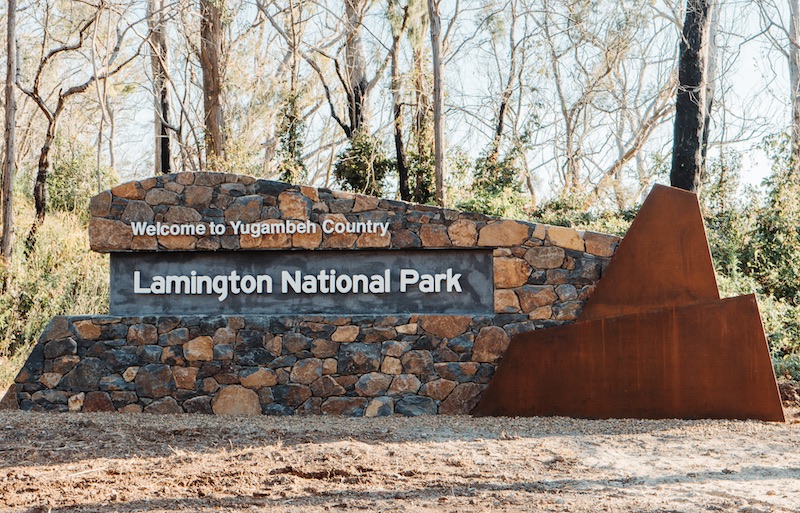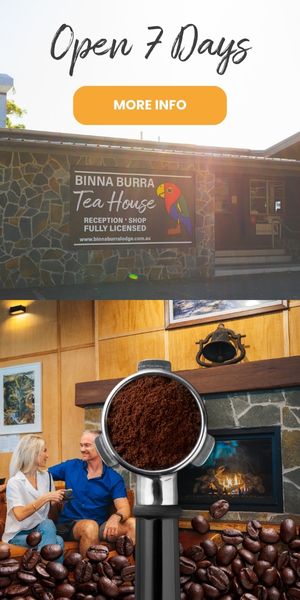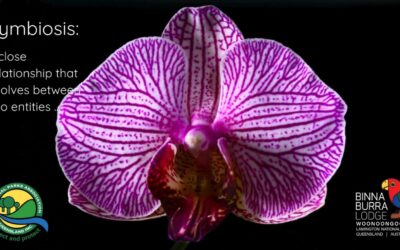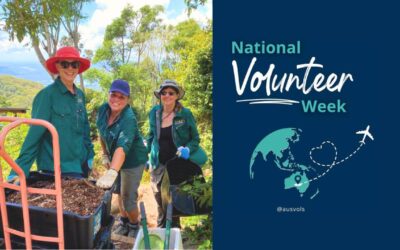Binna Burra Lodge welcomes Lamington National Park (Woonoongoora) to the only global standard that recognises protected and conserved areas for effectiveness in their governance and management and conservation outcomes. Binna Burra Lodge is a social business that operates on the heritage listed Binna Burra Cultural Landscape in south east Queensland, Australia.
The IUCN Green List was launched by the International Union for Conservation of Nature (IUCN) in 2014 to recognise natural sites around the world that meet the Standard to demonstrate that they are achieving positive outcomes for people and nature.  Its main purpose is to support sites to improve their governance and management, to address threats and challenges and to build the necessary capacity to do so. The IUCN Green List builds on the early work on developing a standard for protected area management undertaken at the IUCN World Parks Congress in Durban, South Africa, in 2003. It was not until 2008 that sufficient support for the development of a standard and certification system was evident and World Commission on Protected Areas (WCPA) commenced a pilot programme to examine the idea in detail.[1]
Its main purpose is to support sites to improve their governance and management, to address threats and challenges and to build the necessary capacity to do so. The IUCN Green List builds on the early work on developing a standard for protected area management undertaken at the IUCN World Parks Congress in Durban, South Africa, in 2003. It was not until 2008 that sufficient support for the development of a standard and certification system was evident and World Commission on Protected Areas (WCPA) commenced a pilot programme to examine the idea in detail.[1]
A leading contributor to the development of the IUCN Green List has been a long time friend of Binna Burra, Dr Marc Hocking, Emeritus Professor, School of Earth and Environmental Sciences, The University of Queensland. He is a long-term member of the IUCN through its World Commission on Protected Areas where he leads the Specialist Group on the Green List and Management Effectiveness.[2]
Lamington National Park is one of four new sites added to the 2024 list in Australia, France, Perú and Viet Nam.  The 21,176ha World Heritage-listed national park in Australia is home to 390 species of Australian wildlife and features one of the most diverse areas of vegetation in the country. There are 130km of walking trails, including many of the original walking tracks that were built in the 1930s with the help of Binna Burra Lodge.
The 21,176ha World Heritage-listed national park in Australia is home to 390 species of Australian wildlife and features one of the most diverse areas of vegetation in the country. There are 130km of walking trails, including many of the original walking tracks that were built in the 1930s with the help of Binna Burra Lodge.
The campaign to preserve the resource-rich, mountainous land as national park began in the 1890s with a Queensland grazier, Robert Collins, who learned about the world’s first national park, Yellowstone, in the United States. In 1911, Romeo Lahey, the engineer son of a Canungra sawmiller, joined the campaign and continued the fight after Collins’ death in 1913. In July 1915, 19,035ha of mountainous, forested land was declared Lamington National Park, in honour of the past Queensland Governor Lord Lamington. It was the state’s 9th national park gazetted under The State Forests and National Parks Act 1906 and accomplished after a 20-year campaign.
Romeo Lahey’s distinguished life (1887–1968) included his substantial contributions to the formation of the National Parks Association of Queensland in 1930, and, in 1933, the first camp at Binna Burra and the subsequent incorporation of the company now known as Binna Burra Lodge Ltd in 1934.  Following the threat of the business shutting down after the 2019 bushfire devastation at Binna Burra and the rescue and revival success of the company over the past five years, today the company continues on-site reconstruction efforts as a social business that operates on the heritage listed Binna Burra Cultural Landscape in south-east Queensland, Australia.
Following the threat of the business shutting down after the 2019 bushfire devastation at Binna Burra and the rescue and revival success of the company over the past five years, today the company continues on-site reconstruction efforts as a social business that operates on the heritage listed Binna Burra Cultural Landscape in south-east Queensland, Australia.
Romeo Lahey had lobbied for the park to be named with a local indigenous word – Woonoongoora – rather than after the Englishman, Charles Wallace Alexander Napier Cochrane-Baillie, 2nd Baron Lamington, GCMG, GCIE, FRSGS (a British politician and colonial administrator who served as Governor of Queensland from 1896 to 1901, and Governor of Bombay from 1903 to 1907), but he was not successful in that endeavour. Post the 2019 bushfire devastation Binna Burra released its first Reconciliation Action Plan in 2021, and nowadays Binna Burra Lodge refers to its location as Woonoogoora (Lamington National Park).
Binna Burra Lodge contributed to stakeholder consultations during the process for the national park to be nominated for the IUCN Green List. Steve Noakes, Chair of the Board of Directors at Binna Burra Lodge has been a long-standing member of the IUCN Working Group on Tourism and Protected Areas and supported the nomination process. A former Councillor and Vice President of the National Parks Association of Queensland, in 2021 Steve gave the 19th Romeo Lahey Memorial Lecture: Issues for QLD’s national parks from 1930 to the Black Summer Bushfires 2019/2020). Noting Dr Marc Hocking was in the audience, for the 2022 20th Romeo Lahey Memorial Lecture: Quality Counts – making protected areas effective, equitable and successful), Steve suggested the guest speaker was Marc Hocking who addressed the development of the IUCN Green List.
Steve Noakes said: ‘At Binna Burra, we continue the vision from well over a century ago of Robert Collins and Romeo Lahey knowing that protected and conserved areas are effective measures for conserving biodiversity. Binna Burra exists because of Woonoongoora (Lamington National Park). Current and future generations of custodians of this place will continue to collaborate with all agencies to ensure the effective governance and management of the national park to ensure biodiversity outcomes in our protected and conserved areas – not only just here in south-east Queensland, but also across the reset of Queensland, across Australia and where we can help, anywhere in the world where biodiversity is under threat.’
For any further comment, email Steve Noakes at [email protected]
Image: Romeo Lahey Memorial Lecture @ Brisbane City Hall delivered by Emeritus Professor Mark Hockings, University of Queensland in 2022. Marc initiated the IUCN WCPA work on the Green List of Protected and Conserved Areas. With Steve Noakes, Chair of the Board of Directors, Binna Burra Lodge and former Vice President, National Parks Association of Queensland.
[1] PARKS VOL 25.2 NOVEMBER 2019. Hockings, M (et al). ‘THE IUCN GREEN LIST OF PROTECTED AND CONSERVED AREAS: SETTING THE STANDARD FOR EFFECTIVE AREA‐BASED CONSERVATION’
[2] Dr Marc Hockings: Initiated and is leading the IUCN WCPA work on the Green List of Protected and Conserved Areas. He is also a member of the IUCN Species Survival and Ecosystem Management Commissions. Marc was the principal author of the IUCN’s best practice guidelines on evaluation of management effectiveness in protected areas. https://about.uq.edu.au/experts/329
Links:







